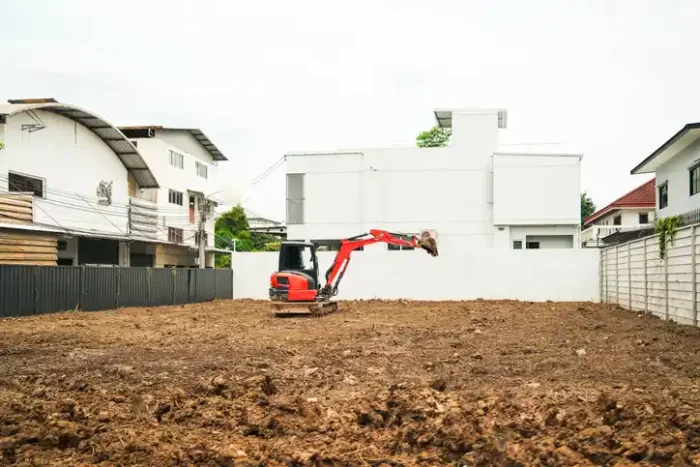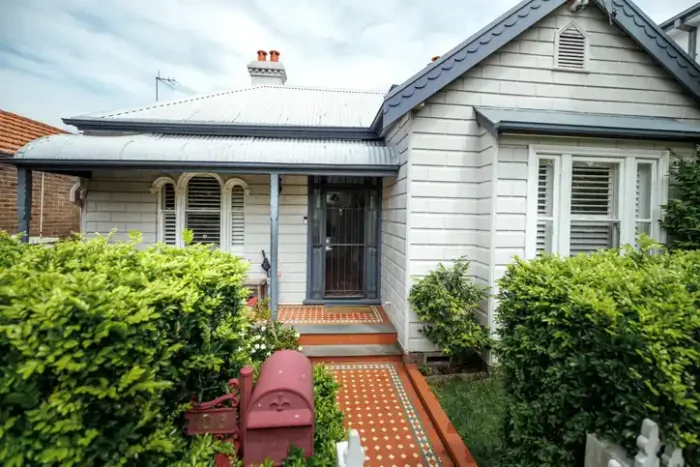To build or to retain: that is the question (in Australian property)
Published
November 26, 2025
Published
November 26, 2025

You’ve heard the disaster stories of new builds since COVID. Two-year waits, blown-out quotes, even builders going under. There’re enough scary tales out there to make many property owners consider whether pushing over their existing (but perhaps shabby or dated) established house and laying new foundations is really worth it.
That’s a dramatic view of the residential building journey. In reality, many have great experiences. They feel the excitement to watch their future home go from a few dozen lines on an architect’s page to a place they will make a sanctuary with their family for years to come. There’s joy in a new build, and strong benefits for resale.
But it’s not for everyone. The case for retaining an existing property, and perhaps renovating or merely improving the aspects that you’re unhappy with (maybe with a coat of paint or expert help in the garden), is becoming a solid one with the cost of building and labour increasing.
So, let’s get to it. What’s the case for building a new home versus retaining the existing one?
The case for building a new home

A new build gives you something older homes simply can’t match: a clean slate.
You control the layout, the orientation, the materials and the details that make day-to-day living easier. Want an open-plan kitchen? Higher ceilings? Wider hallways, bigger windows, better insulation? New homes give you that from day one.
Modern design standards also solve problems that older houses often struggle with. Poor thermal performance. Awkward room sizes. Low ceilings. Limited natural light. Storage that never seems to be where you need it. A new build lets you design for how people live today, not how they lived in the 1970s.
There’s also comfort in knowing everything is under warranty, with no hidden structural surprises, patchy DIY work from previous owners or asbestos lurking behind the walls. For many, the peace of mind alone is worth the investment.
And from a value perspective, new builds usually deliver strong buyer appeal. Contemporary finishes, the promise of low maintenance and even higher ceilings can place your home at the top of the shortlist when you eventually sell.
The trade-off is time and rising costs. Builders are still dealing with labour shortages and supply delays, and rising contract prices have become the norm. Even with a fixed-price build, variations or compliance requirements can push budgets around.
Still, if you have a clear vision and patience for the process, the payoff can be a long-term home built exactly for your lifestyle.
The case for retaining your established property

Keeping your existing home can be the more practical choice, especially if the bones of the house are solid and the location works for you. Not every issue needs a bulldozer. Sometimes it just needs a plan.
Renovation gives you the ability to improve function and comfort without rebuilding from scratch. Opening up a wall to let in light, updating a dated kitchen, or adding a second bathroom can shift the feel of a home dramatically. Repainting, landscaping, or replacing flooring can also deliver big improvements at a fraction of the cost of a knockdown rebuild.
Cost is the big factor here. Rebuilding requires demolition, design work, permits and a full construction process. Renovating lets you stage upgrades over time, which spreads out expenses and avoids the upheaval of moving out for a year. And in many suburbs, older homes sit on larger blocks, meaning you can keep the land value while tailoring the home to your needs.
There are limits. Renovations can uncover hidden problems, and older layouts sometimes fight against modern upgrades. Low ceilings, structural walls in inconvenient places or small bedrooms can restrict what you can achieve. If your home needs major structural work, or the layout simply doesn’t suit modern living (no matter how much you force it to), then the cost of renovating can climb close to a rebuild anyway.
If your frustrations are aesthetic, renovating might work for you. If they’re material, then rebuilding may be the cleaner path.
When to consider subdividing

Land. It’s what so much of us strive for, and when a family grows, it’s the patch of grass out the back or the space for an additional bedroom that becomes prized more than anything. But then the sniff of profits make you question how much you need the extra space, and whether you could leverage it to make a few (hundred thousand) extra dollars, to enhance your lifestyle, to maybe even reduce or obliterate your mortgage.
Yes, subdividing — creating one or more new titles by separating the existing block — can offer huge profits for owners willing or able to do it. To carve off the huge backyard and sell it off to a land buyer for their own build. You reduce your land size but the sale proceeds after a sub can be huge — particularly in today’s market, where residential land is harder and harder to come by.
So, when is subdividing worth it?
A simple test is to consider how the existing space is working for you. Do you already dream of an extra 100sqm to put that gazebo in? Do you beg the kids to go down the park so you can enjoy a few minutes of peace in the backyard? Then maybe losing that additional space via a subdivision is something worth being critical of.
That said, you might complain about the size of the lawn you need to mow and realise that problem can be replaced with additional capital over a nine-or-so-month process. On the financial side, the pressure of repayments weighs on many, and Australians living within a few kilometres of the CBD are now accepting that higher density areas are becoming the norm. Subdividing and selling reduces the size of your block but also the size of your mortgage when sale proceeds are considered.
At the end of the day, land is a commodity that perhaps has more likelihood than not of increasing in value over time. So, if you don’t need the extra cash, but you do need the extra space, then a subdivision might be something to consider down the road.
At the end of the day
There’s no single right answer in the build versus retain debate. A new home gives you modern comfort, smart design and long-term value, but it demands time, money and patience. Keeping your established property can be more cost-effective and less disruptive, especially if the structure is sound and your frustrations are cosmetic rather than structural.
The real question is what matters most to you. Space? Budget? Time? Lifestyle? If you can map your priorities clearly, the choice becomes much easier.
Both paths can lead to a home you love. The challenge is choosing the one that fits your life today and sets you up well for tomorrow.
Stay in the loop
This article made you think about your own circumstance? Did you get a view you never considered? Well, we have plenty more on all things property.
Subscribe to our newsletter and you’ll receive our expert views and market news every month. We never spam and you can unsubscribe anytime.






